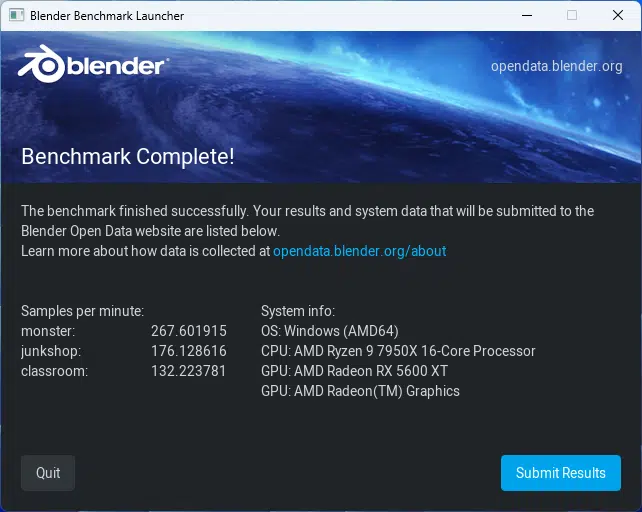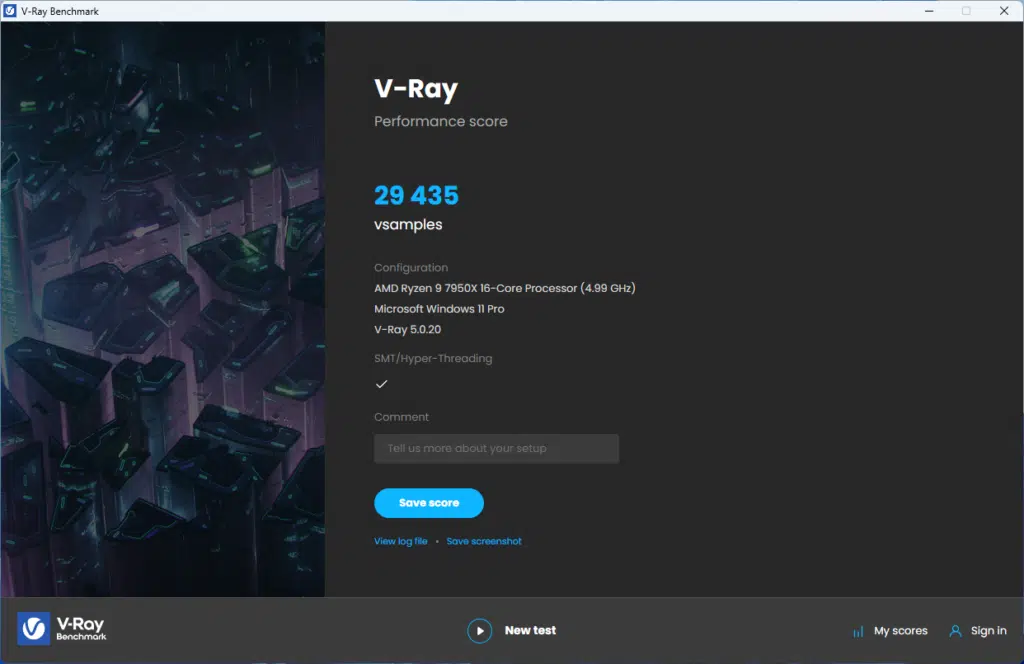
Introduction
Today we have a new AMD B650 chipset-based motherboard for review, the ASRock B650 Pro RS socket AM5 motherboard. This is a new, budget-conscious, DDR5 motherboard from ASRock based on AMD’s B650 chipset. Currently, you can find this motherboard for $213 on Amazon and Newegg.
The ASRock B650 Pro RS is based on AMD’s new B650 chipset, which as we have seen from our testing is no slouch, though it is on the lower end of AMD’s chipsets. As with all of the AM5-based motherboards we have tested this motherboard also accepts DDR5 memory, and any AM5 chip released. That being said, this chipset does have limitations we have touched on previously, such as being limited to PCIe 4.0 for NVMe slots, ASRock has added PCIe 5 for a single NVMe slot. Similar to other B650 motherboards, we are limited to PCIe slots being a mix of PCIe 4.0 and 3.0, with the ASRock B650 Pro RS having two of its PCIe slots (The Gen 4 x16 slot and the Gen 3 x4 slot) coming from the processor, while the remaining Gen4 PCIe x1 slot is served by the B650 chipset.
Packaging and Contents
With the ASRock B650 Pro RS being a budget-conscious motherboard, we did not expect much in the way of extras to be packaged in, and we were not surprised when this was the case. You will find the typical SATA Cables, three (3) M.2 screws, and a case badge, as well as the manual and a simplified installation pamphlet.

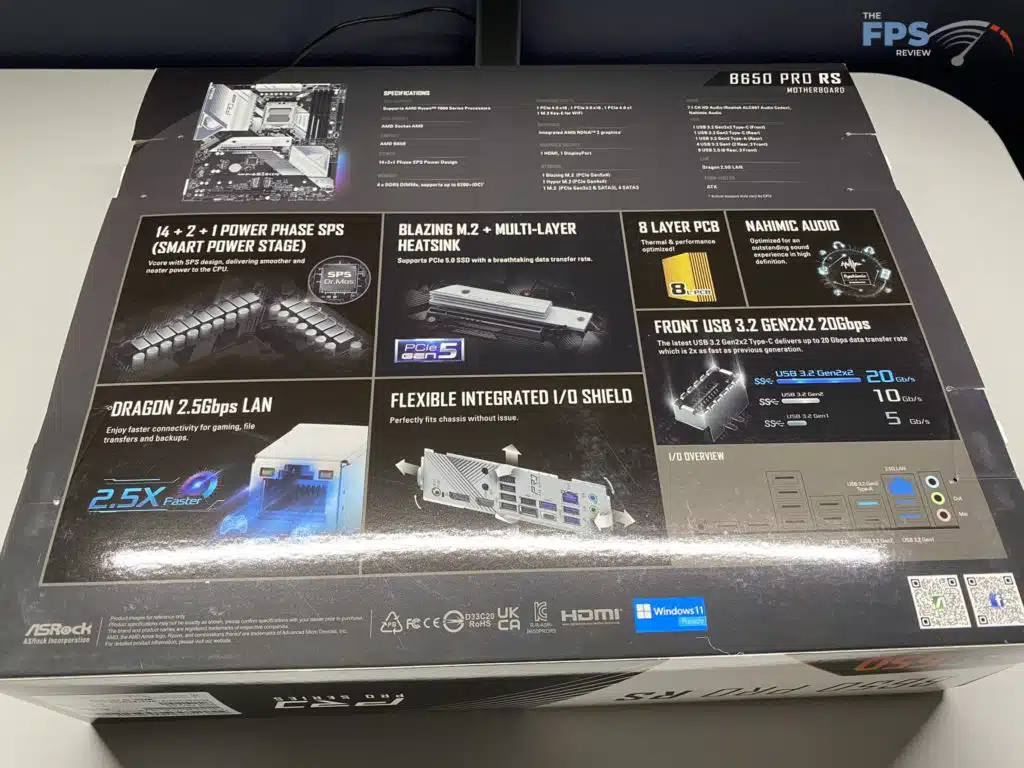
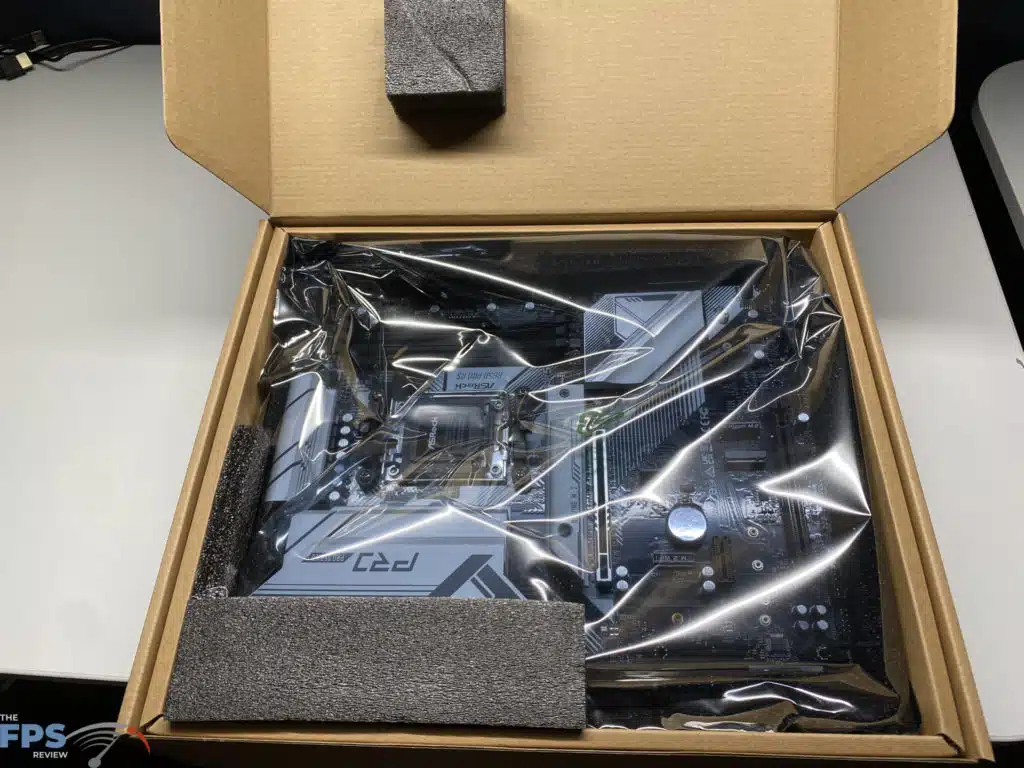

ASRock B650 Pro RS PCB & Features
The layout and construction of this motherboard are what we would expect from a motherboard of this price tier. Overall this was a very solidly built motherboard with plenty of cooling over the VRMs and other critical components on the motherboard. While we did not run into many issues with this motherboard, it is worth mentioning that the location of the “Blazing M.2 Socket” above the top PCIe slot lead to some trouble in removing our GPU when the heat sink was installed. This was mostly due to our XFX RX 5600 XT having a backplate, however, we wanted to note this since this is the first AM5 motherboard we have run into this.
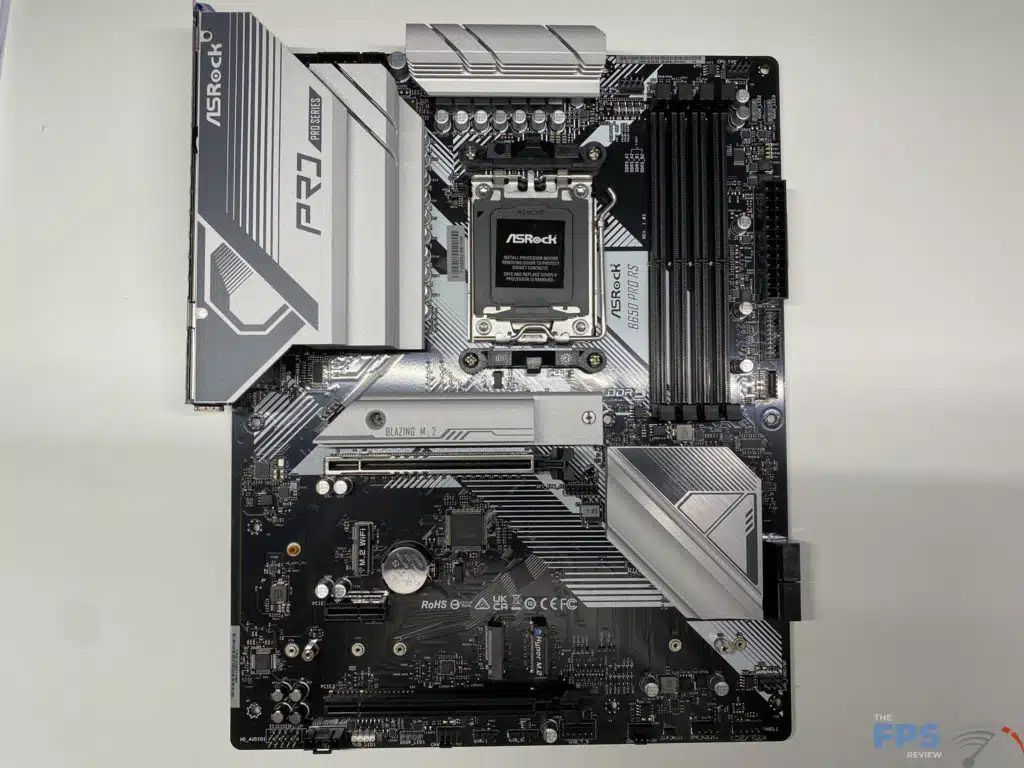
ASRock has implemented DrMOS SPS, Smart Power Stage, technology on this motherboard. Unlike most MOSFET designs, this allows for lower operating temperatures and more efficient operation than a traditional design. In addition to this, we see a 14+2+1 VRM design, for 14 VCORE phases, 2 SOC phases, and a single VDD_MISC Phase on this motherboard. All of this gives us a very stable platform for testing.
On the rear I/O, we have connections for a 2.5 GbE LAN, powered by the Realtek Dragon RTL8125BG, one (1) USB-C port, three (3) total USB 3.2 ports, six (6) USB 2.0 ports, and HDMI port, a DisplayPort 1.4 port, a BIOS Flashback button, HD Audio Jacks (Line In, Front Speaker, and Microphone), as well as two antenna mounting points if you would like to add Wi-Fi to this motherboard. There is a dedicated M.2 socket (Key E, type 2230) intended for adding Wi-Fi.

For storage on this motherboard, there are the four (4) SATA 6 GB/s connectors, as well as three (3) M.2 slots that will allow for the installation of M.2 type drives up to Type 2280 in size, which will cover the vast majority of storage devices on the market today. Of these M.2 slots only the top, “Blazing” slot is fed from the CPU, while the remaining two are fed from the chipset. For the best performance, you will want to install your system drive in the topmost slot to take advantage of the PCIe 5.0×4. If heat is a concern for you, only the top slot comes with a heat spreader, you will want to think about adding additional cooling if you intend to use a higher-performance drive in either of the bottom two slots.
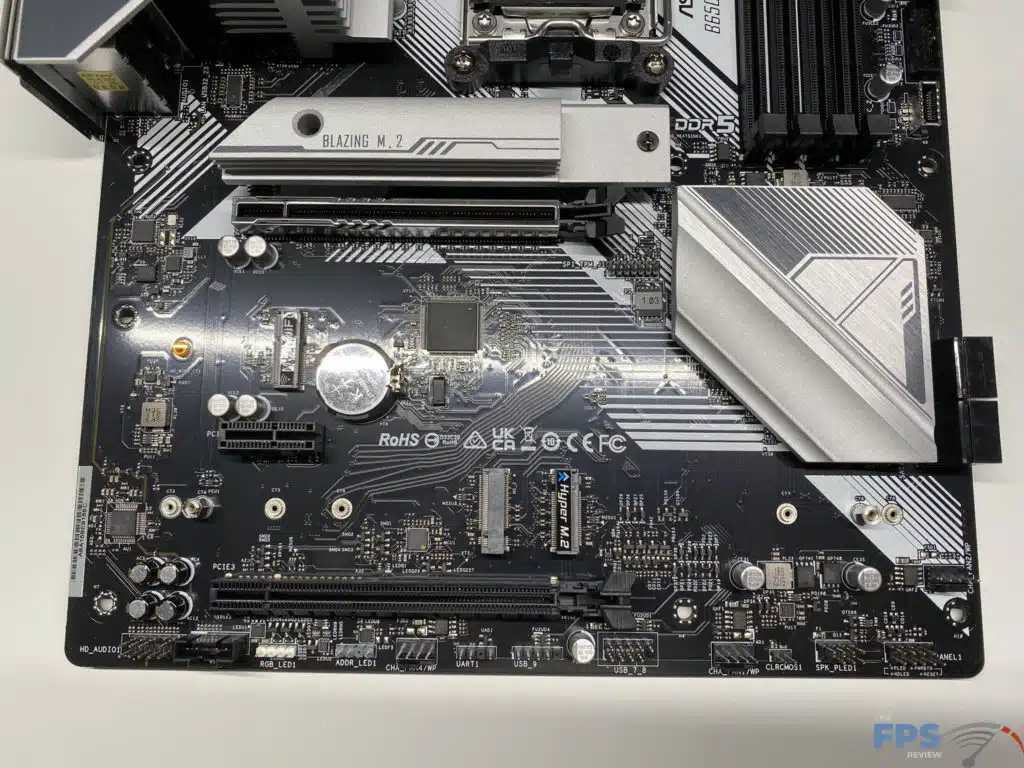
For PCIe device expansion, this board has only three (3) slots, which is what we are starting to expect on a B650 class board. Of these three slots, the topmost slot has metal re-enforcement which is nice to see, especially with the size of graphics cards that are on the market today. This slot is one of two fed from the CPU on this motherboard and has a full 16 lanes, the remaining slot is the bottom slot that is limited to 4 lanes at PCIe 3.0 speeds. The remaining x1 slot is located in the middle and is fed by the chipset.
Beyond the items we have noted there are the usual USB headers for USB Type-C, USB 2.0, and 3.2 ports on your front panel, enough for three (3) USB 2.0 ports, a Gen2 Type-c port, and a pair of USB 3.2 ports.
There are a total of six (6) fan-type connectors on this motherboard, four are dedicated to chassis or water pump fans, one is noted to be for a secondary CPU fan or a water pump connector, and the last fan header is noted to be for the CPU fan. Overall, all of these headers are in the normal locations and should allow for connection to any fans within your case that you might have.
Unlike the current trend in the market to put RGB all over a motherboard, this board has no active RGB on it, however, it does have three addressable 3-pin 5050 RGB type LED strip headers, and a single RGB LED 4-pin 5050 RGB type header allowing a user to add RGB if so desired to the system.
As with all of AMD’s new B550 and X670-based chipsets, this motherboard is DDR5 only. Specifically, this motherboard has four total slots with a maximum capacity of 128 GB total (32 GB per slot maximum). There is support for up to DDR5 6200 memory, and only non-ECC / un-buffered memory is supported. This motherboard has AMD EXPO (A-XMP) profiles for memory. For Audio the ASRock B650 Pro RS uses a Realtek ALC897 Codec, allowing up to 7.1 channel sound, and utilizes Nahimic audio drivers.

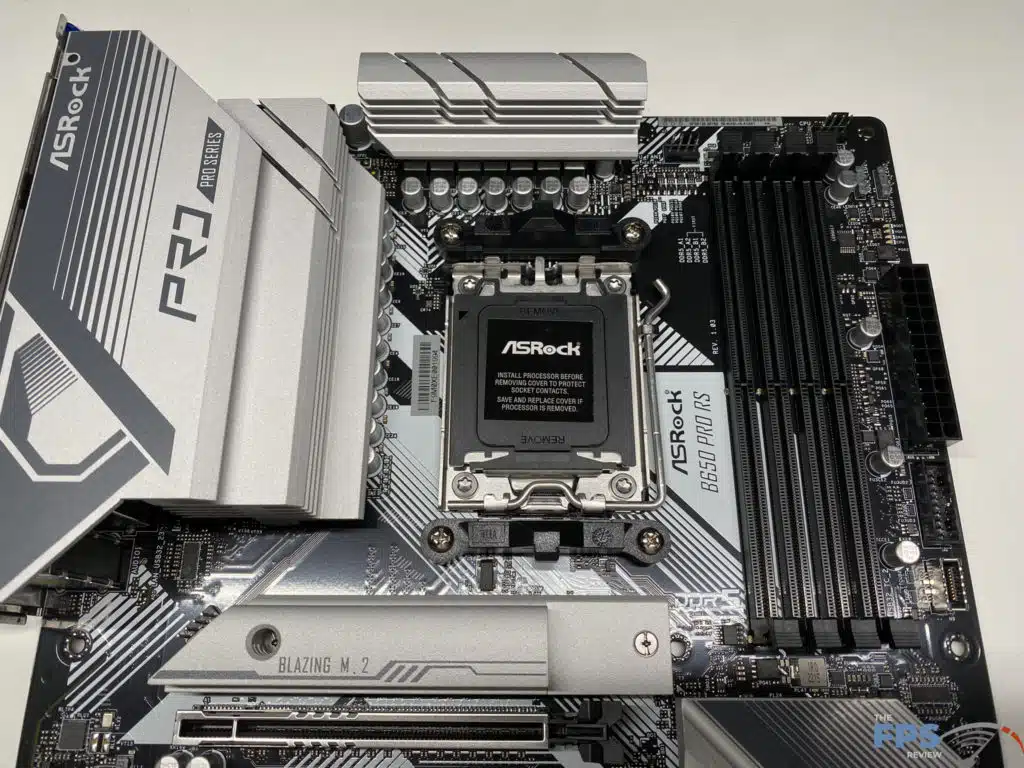
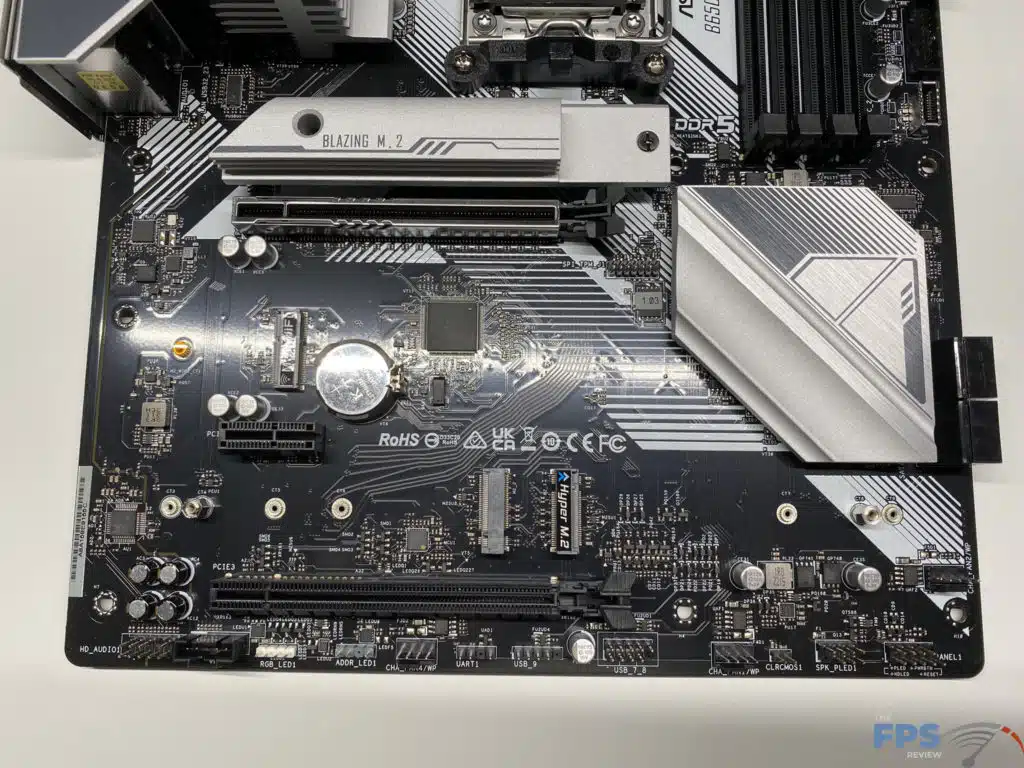
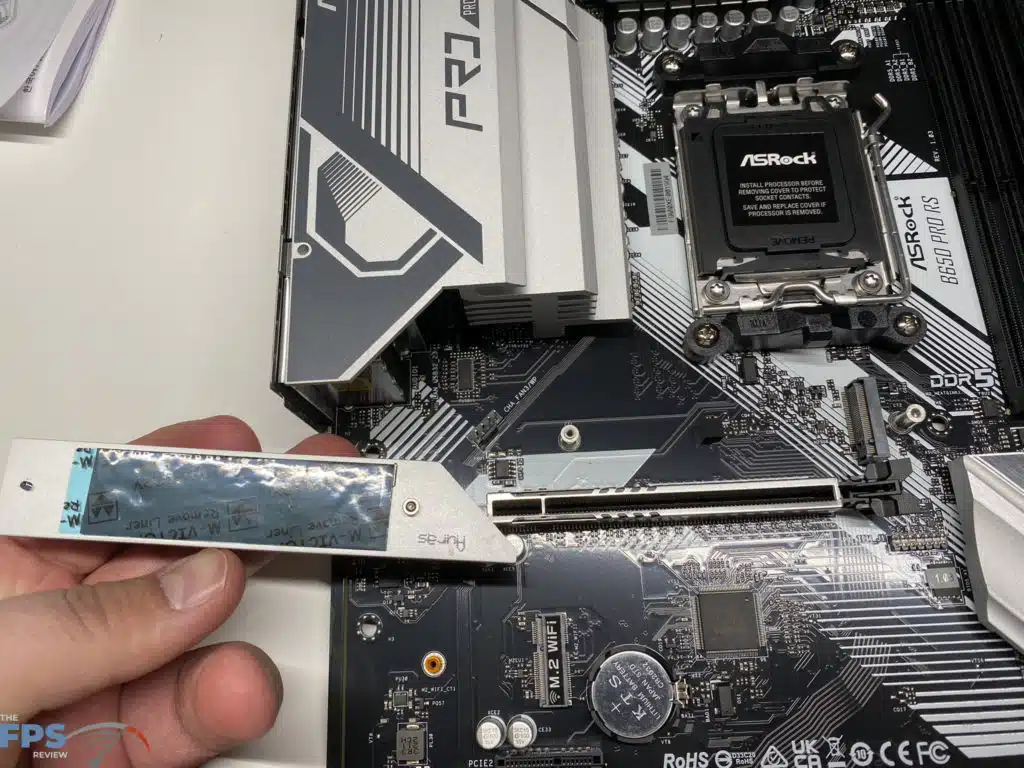
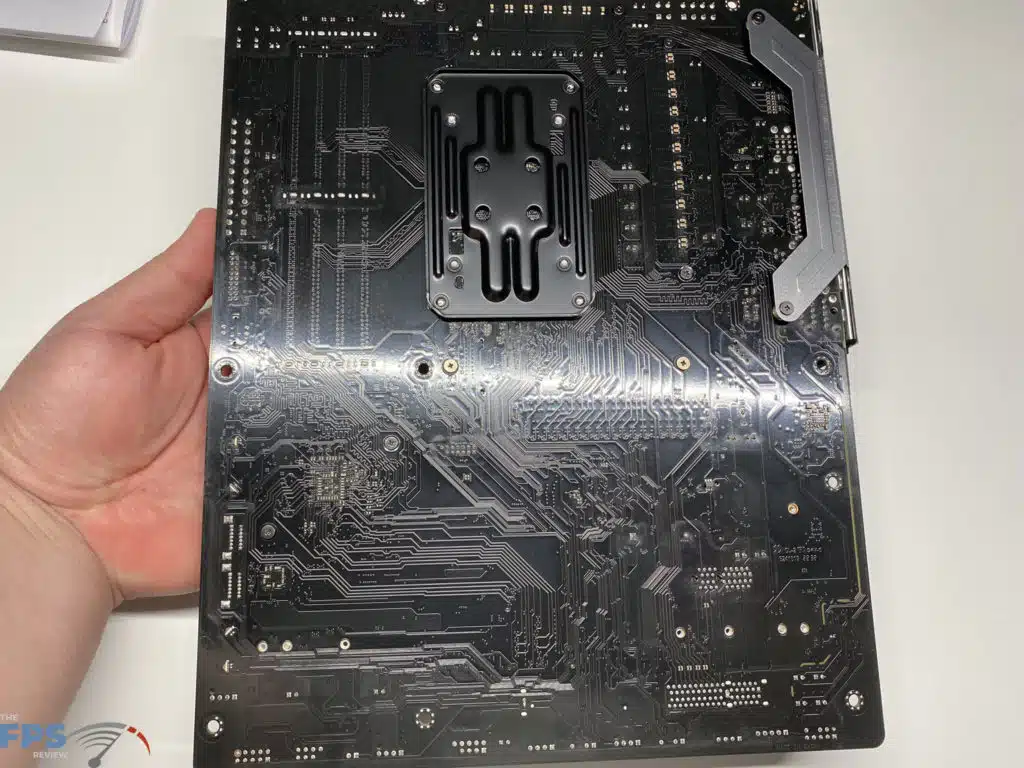
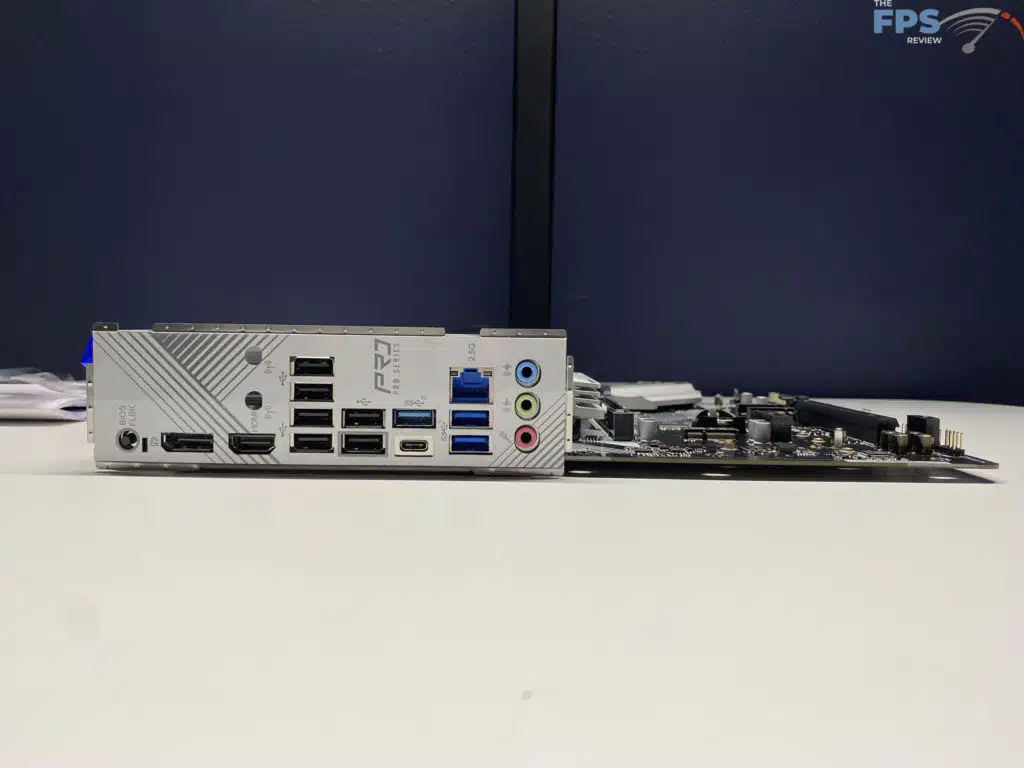
BIOS
The ASRock B650 Pro RS features a single 256 Mb American Megatrends Inc. (AMI) UEFI Legal BIOS ROM. Prior to testing we went ahead and upgraded the bios to version 1.18, released March 03, 2023. All of our testing and images were done after this BIOS update.
Those who are familiar with previous generation ASRock products, both Intel and AMD, will see similarities in the UEFI BIOS interface. There are some changes based on the generation of products, but overall, you will feel right at home navigating this interface to find what you are looking for.
When you first enter the BIOS you are provided with the “Easy Mode” which gives brief information on the motherboard, but does not provide any opportunities for adjustments in this mode, for that you need to go to “Advanced Mode” by either clicking on it or hitting “F6”.

While the target audience for this motherboard is not to try and achieve peak performance on your CPU, it does have many options that you would be looking for when overclocking your system located in the “Advanced Mode” settings. We will not be going into depth on all the individual settings, or different pages within the text of this review, however, we have included a few screenshots from within the “OC Tweaker” section to give you a feel for the breadth of options for adjustments.

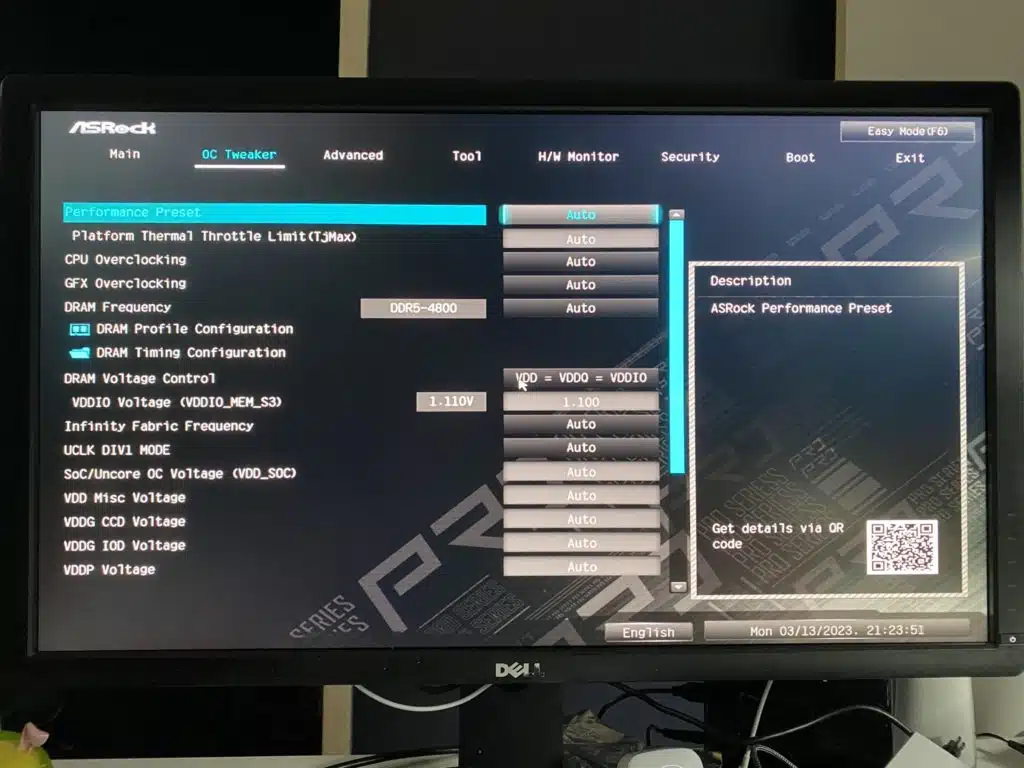


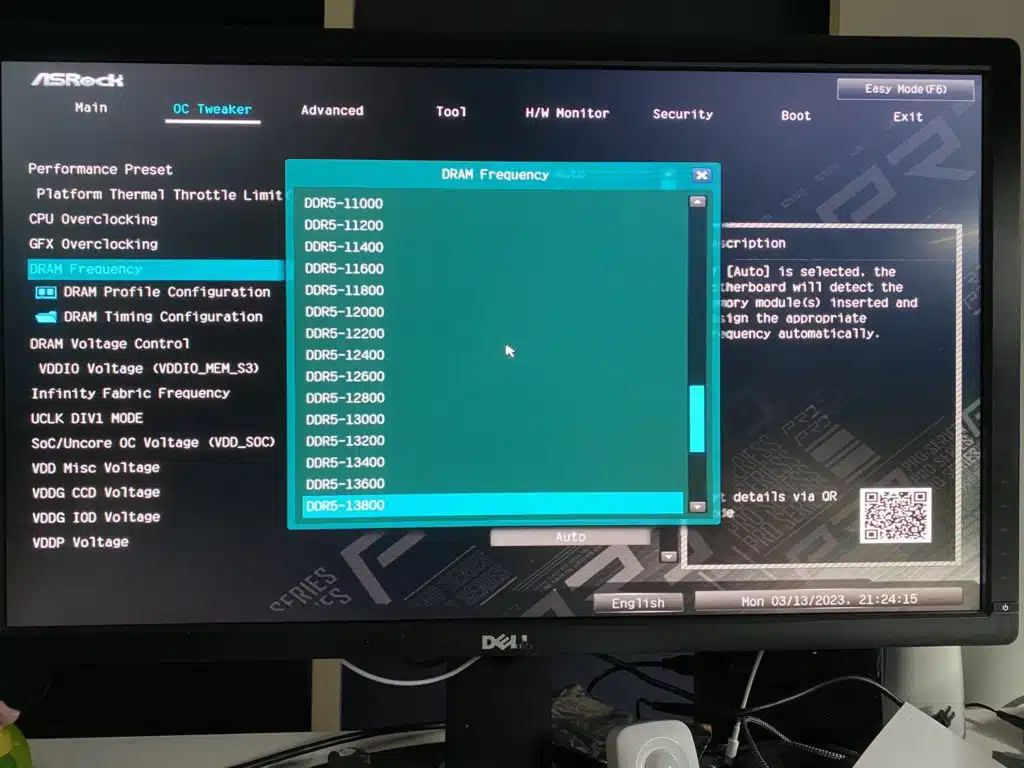
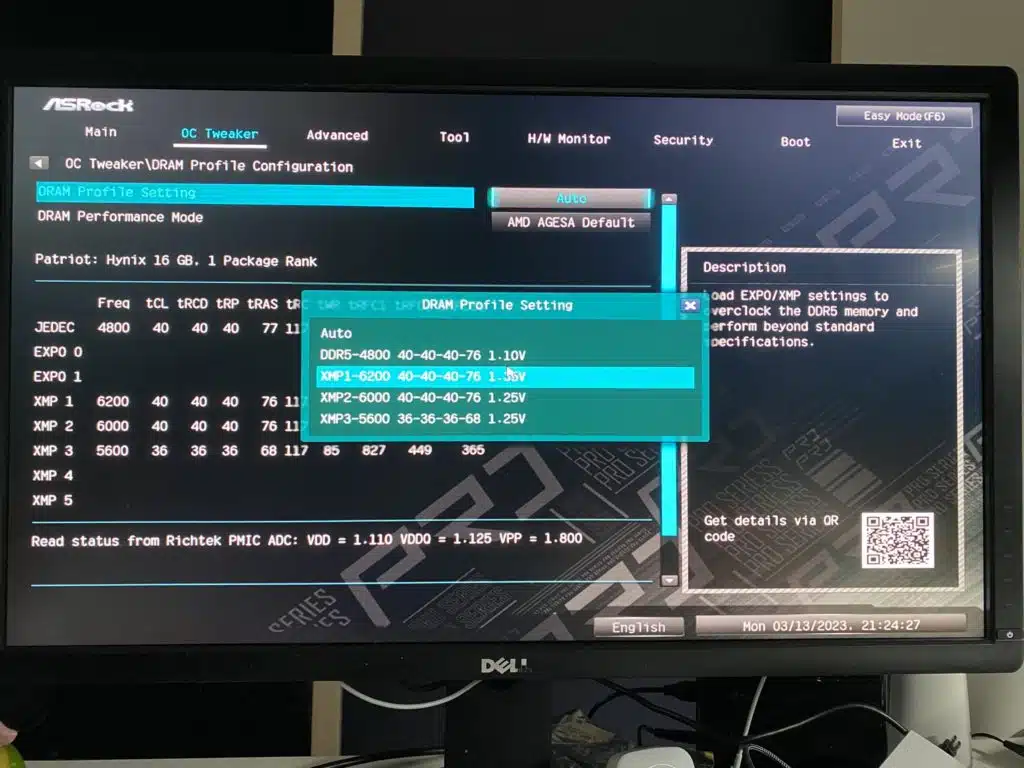
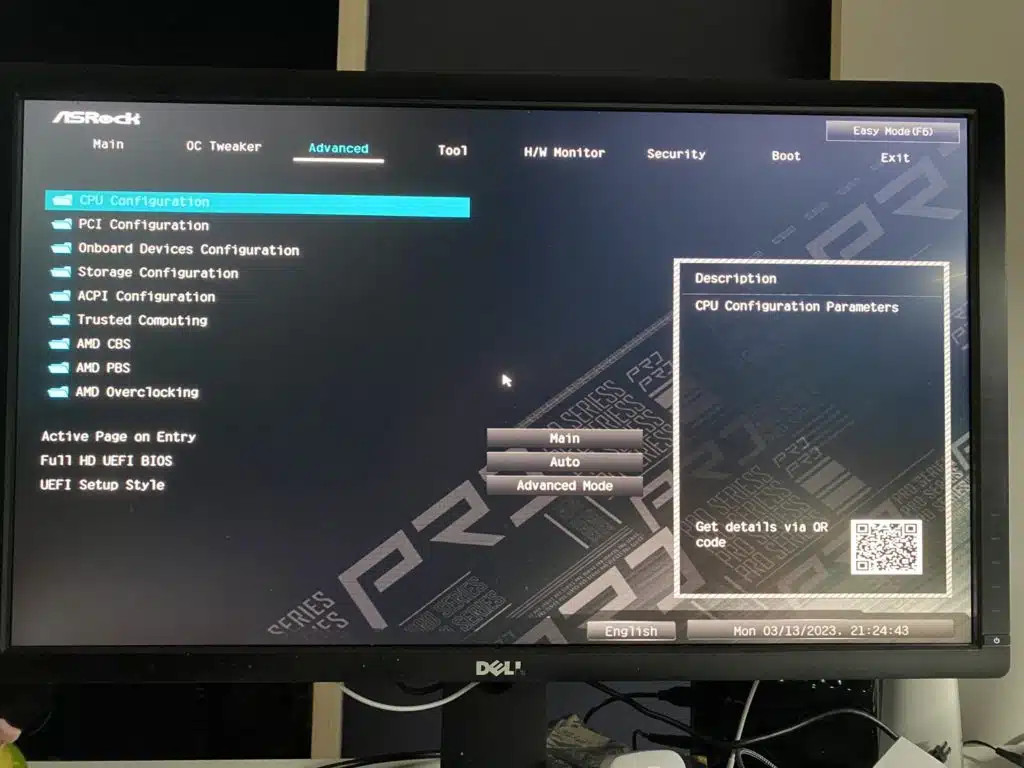


We do want to call attention to the primary options a user might be looking for. Specifically, there are two areas you can enable Precision Boost Overdrive (PBO), similar to other motherboards we have reviewed. The first spot you can find is the first option within “OC Tweaker”, this will give you options to enable PBO flat out or enable with temp maximums. The other location is within the “Advanced” menu, there is a further AMD Overclocking page that includes PBO options Similar to our previous reviews we start to hit a clock wall with our 7950X at 5.1 GHz sustained on all clocks with our setup, no matter what settings we adjusted within the BIOS.
Test Setup
We have the latest BIOS installed, 1.18, dated March 3, 2023. All of our testing was performed at the default settings from the BIOS with the exception of the memory, we applied the A-XMP Profile 1 to have our RAM operating at 6200 MHz.
For the OS setup note that we are on the latest H2 Windows 11 update with all incremental Windows updates applied at the time of writing.
Due to us having a maximum speed of 5.1 GHz all-core speed during testing, we are going to be providing only one set of data measurements for the ASRock B650 Pro RS.
Subsystem Testing
DPC Latency
The highest measured interrupt to Process Latency after a 10-minute run time was 202.70, and over three runs we averaged 197.2, over three times the average speeds we experienced with the GIGABYTE B650 AERO G. During normal testing use we did not have any noticeable issues, however, it is important to note that this is much closer in line to the Latency’s we saw on previous generation platforms.
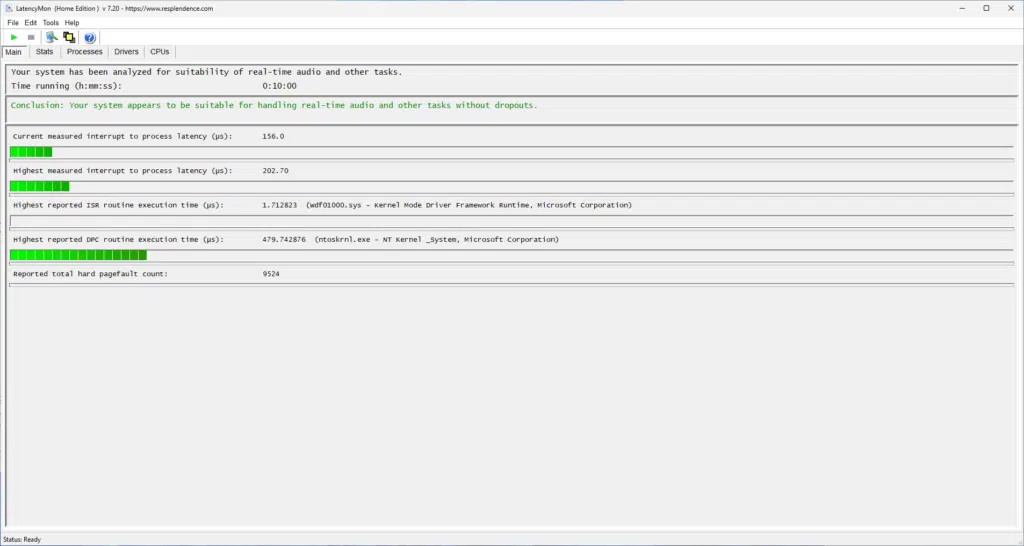
SSD Performance
For this motherboard, we tested two slots, the “Blazing” speed slot served by the CPU (M2_1), and the “Hyper” slot (M2_3) which is connected to the motherboard’s south bridge. We are testing with a Samsung 980 Pro 500GB M.2 NVME SSD. For the PCIe5.0 slot, we saw a maximum of 6752.25 MB/s read, and 4852.67 MB/s write, which are very respectable numbers that match the read speeds we saw on our GIGABYTE B650 AERO G review, but it has over 500 MB/s of additional write speed which we did not expect. The second slot we tested had a slightly lower read speed of 6538.72 MB/s, but an even higher write speed of 4881.35 MB/s. We did not test the last M.2 slot, however, it would be expected to be slower due to being a PCIe 2.0 slot that is shared with the SATA ports on this motherboard.

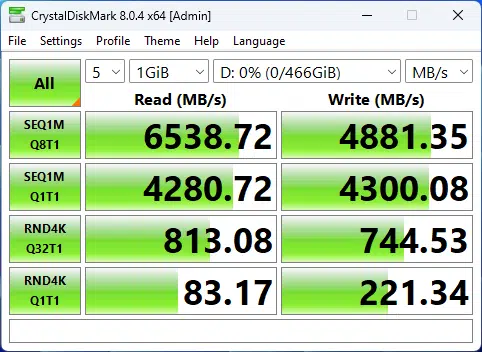
Application Benchmarks
Memory Bandwidth
For our application benchmarks, we are going to start with Aida64, and its memory read and write performance test. At the default settings, with the memory set to 6200MHz the read performance on this motherboard is 74,021 MB/s of memory bandwidth. This is slightly slower than we have previously seen with this 7950X on other motherboards. We see the write performance come in at 74,707 MB/s, a drop compared to the GIGABYTE B650 previously tested, but this is right in line with what we expect and is in line with the higher-end X670E board we have tested.

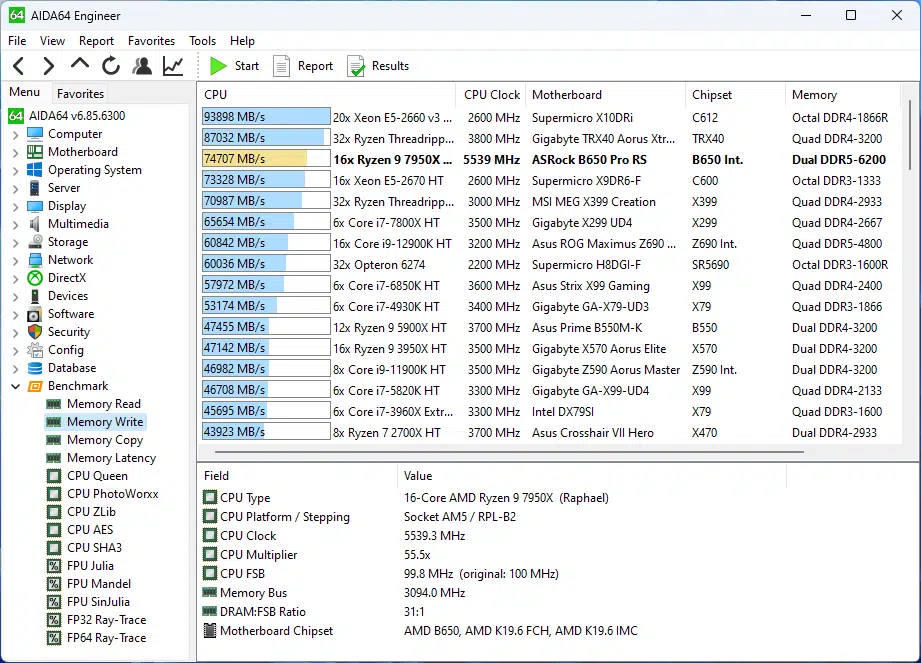
PCMark 10
The standard PCMark 10 test result that we were able to achieve is 9,321, which is nearly as high as the X670E board we recently reviewed and about 10 % less than we saw on our initial 7950X Review ( AMD Ryzen 9 7950X CPU Review – Page 3 of 9 – The FPS Review ), however, take caution with comparisons as we were also able to achieve higher clock speeds with PBO in that testing.

Cinebench R23
With Cinebench we ran the multi-core test multiple times, and every time we received a score of around 37,108. This is again close to what we would expect with this test bench, and nearly matches what we have seen on other AM5 boards we have tested.
Blender Benchmark
With Blender, we were able to achieve 267.60 samples per minute for the monster test, 176.13 for junkshop, and 132.22 for the classroom tests. These are all around where we would expect to see, and nearly matches what we have seen on other AM5 boards we have tested.
3DMark
We ran both Time Spy and CPU Profile tests with 3DMark. With the Time Spy test, we achieved a 15,486 score, and for the CPU profile on max threads, we achieve 15,887. Again we were surprised by these values as we are seeing nearly the same performance as the X670E chipset at the bottom of AMD’s chipset range.
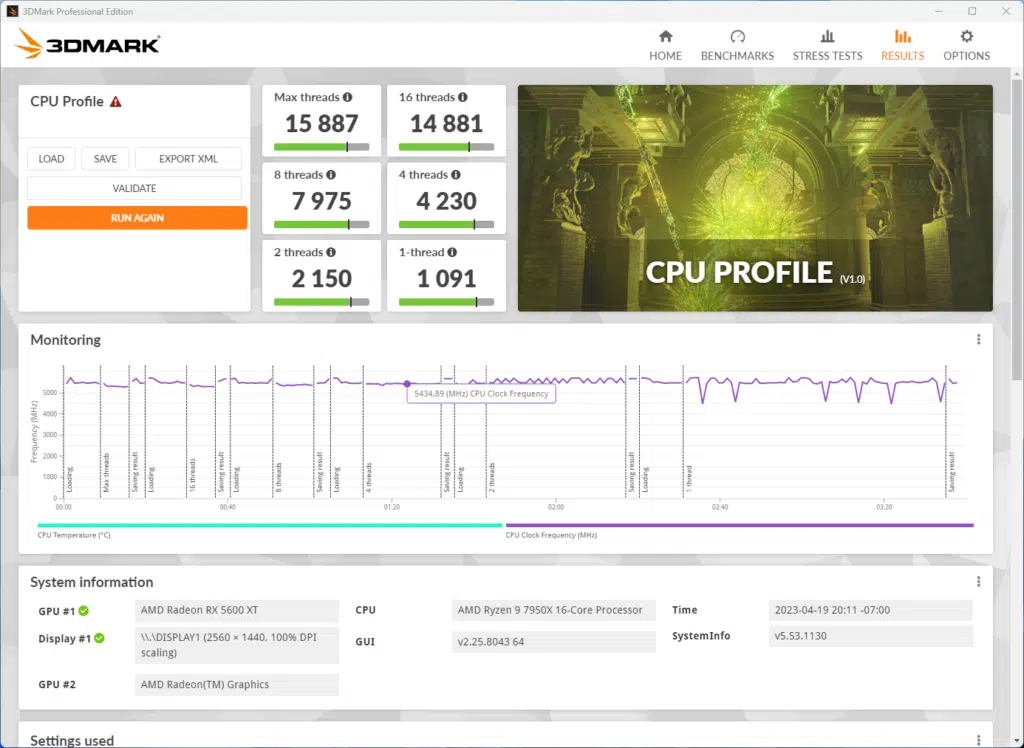
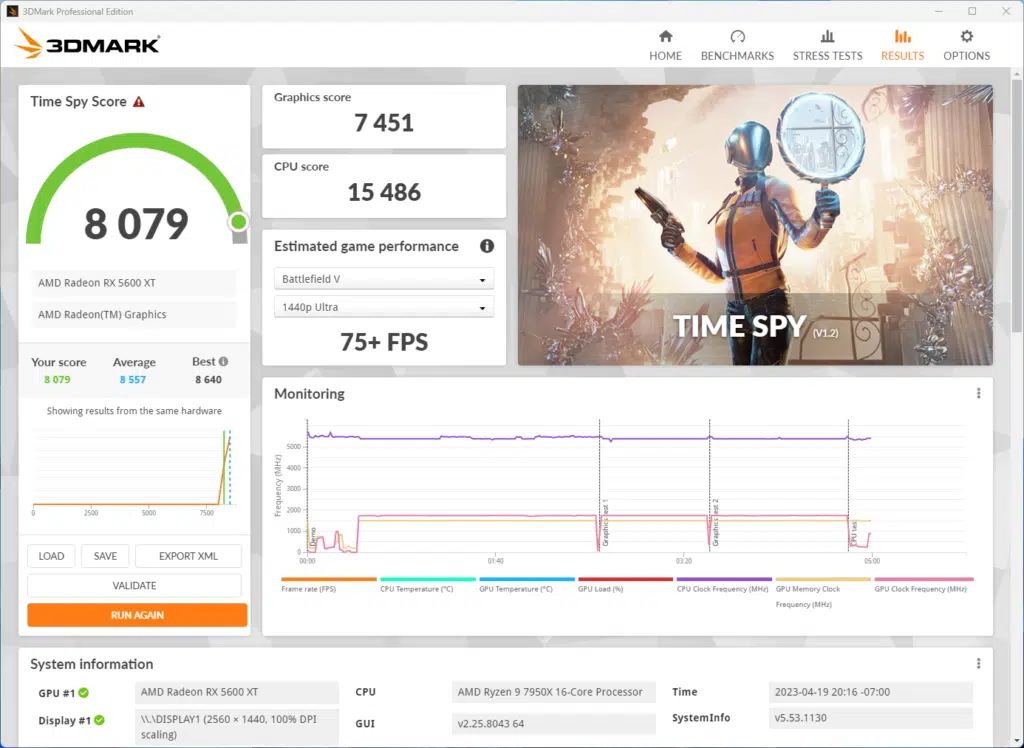
V-Ray Benchmark
Running V-Ray we achieved a score of 29,435, again this is right in line with what we would expect, and actually slightly exceeds previous boards tested.
Conclusion
Today we have evaluated the second AMD B650 motherboard we have had our hands on, the ASRock B650 Pro RS, which is a low to mid-range ATX motherboard that is going for a price of $213 on Amazon and Newegg at the time of publishing. While this is not a high-end board, it has robust cooling on its VRMs and MOSFETs, as well as more than adequate cooling for the main M.2 drive slot, and has many of the features of the higher-end X670E boards with minimal loss in performance.
Installation and Use
Physical installation of this motherboard was about what we expect for any ATX motherboard, and its locations for fan headers and power connections are exactly where we like to see them. However, as we mentioned earlier in the review, once the system is fully assembled you may run into issues removing your GPU if it has a backplate on it, and you have the heat sink installed for the M.2 drive in the topmost slot.
Beyond this, the BIOS was very user-friendly and easy to navigate as everything was located where we expected to find it, and readily available to be adjusted. On top of this, we had no issues doing a BIOS upgrade as the process went flawlessly from a few versions back to the most up-to-date BIOS.
Final Points
The ASRock B650 Pro RS is a very capable motherboard and definitely surprised us with its abilities during our testing. We ran into no stability issues when running our testing, all of the drivers were functional out of the box with no need to sideload drivers, the RAM operated at full speed with its EXPO setting, and it matched the performance of most of the AM5 motherboards we have tested to date. There is not much more we could ask for from this motherboard.
ASRock used the optional B650 chipset features to provide a PCIe 5.0 NVMe SSD slot with a beefy aluminum cooler, which is nice to see on a value-priced motherboard like this. This puts the ASRock B650 Pro RS in the upper tier of B650 motherboards.
The ASRock B650 Pro RS is packed with many features, like the 2.5 GbE LAN, a future expansion for WIFI, USB-C 20 Gbps connections to the front panel, as well as a plethora of USB Type-A ports (Both 2.0 and 3.2). While this motherboard performed as well as we would expect, it was disappointing to see it lacking some features other motherboards in the class have, like dedicated cooling for the second and third M.2 slots, or having all M.2 slots being PCIe 4.0.




.jpg)


